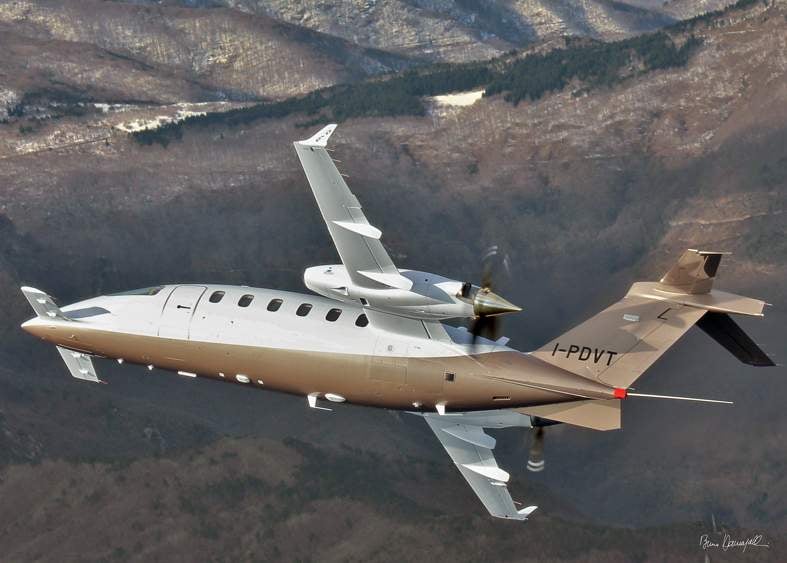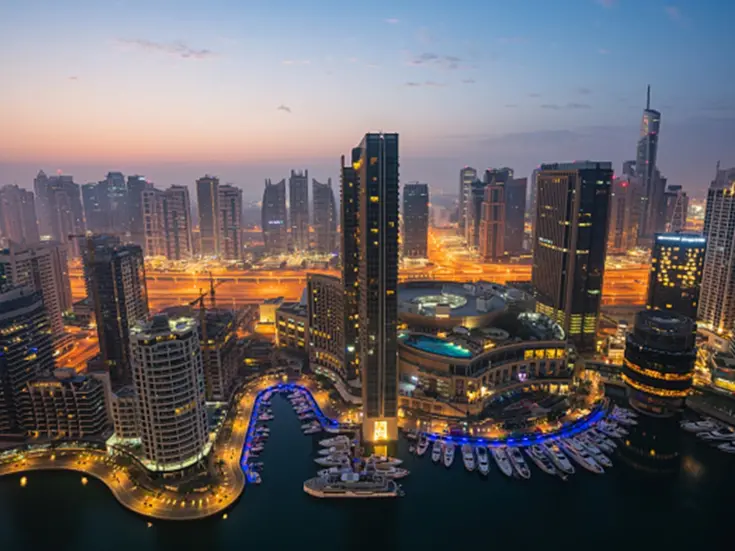
Piaggio’s twin-propeller Avanti EVO is a gem that can give jets the runaround, writes Ben Griffiths.
Even the most jaded Londoner used to the busy skies over the capital cannot have failed to notice an unusually shaped aircraft flitting overhead during early October. Roughly the size of a Learjet, the Piaggio Avanti EVO demands attention for its innovative design, which although now 30 years old still looks futuristic above the City’s glass towers.
Classed as the fastest twin-engined turboprop in the world, the aircraft is as comfortable to fly in as a jet but is cheaper to charter and operate. It also has other advantages, such as the ability to land on airstrips less than 1,000m long. Touching down at London City Airport to showcase the EVO, Piaggio’s test pilots and sales team were in town to highlight its many attributes. The fact they were allowed to use the diminutive Docklands airport at all is testament to its performance from shorter runways, along with its low noise footprint. (London City is notorious in the industry for its stringent noise criteria.)
The aircraft certainly demanded the attention of passengers waiting to board BA’s Embraer jets on the tarmac, as well as air traffic controllers and plane-spotters alike, with a whirl of activity on social media evidence of its popularity. This is in part due to the EVO’s unconventional silhouette — rear-facing propellers attached to the body below a T-shaped tail, with twin miniature wings attached to the nose, making it somewhat resemble a supercharged catfish. Its fuselage is an elegant, streamlined torpedo, which assists with lowering fuel consumption as it reduces drag from the airframe.
Fuel burn is 40 per cent lower than that of similar-sized jets, but the EVO is also capable of comparable speeds, so there’s no compromising on route times. Pilots also love the instant response of the throttle (jet engines lag behind and take a moment to power up or down), and maintenance costs are also lower for turboprops.
All this makes it appealing to operate. But what is it like to fly in? From the outside the surprisingly quiet turboprops sound like a finely tuned sportscar. A normal level of conversation is possible even with the aircraft taxiing close by, thanks to the scimitar-shaped Hartzell propeller blades — five to each of the Pratt & Whitney engines.
On the inside the effect is even more obvious. Having the engines right at the back of the aircraft makes for a far more peaceful experience, even with two large propellers whirring away just feet outside the sleek fuselage. Of course, the luxurious Italian-designed interior helps, with Poltrona Frau leather seats by Iacobucci so comfortable you feel you’re sinking into your favourite armchair as you gaze upon the clouds from your unobstructed windows.
Up front it’s even more spectacular. Piaggio test pilot Marcello Vitale, a veteran Italian air force aviator who graduated from the illustrious Empire Test Pilots School at Boscombe Down in Wiltshire, was one of the crew of two demonstrating the aircraft. He describes the EVO as a ‘wonderful aeroplane’ rooted in what was a completely new design and aerodynamic model. ‘It is very efficient,’ Vitale explains, ‘and was specifically designed to have the best possible efficiency in terms of fuel consumption.’ It is also the only turboprop in the world that can fly at 41,000ft at speeds up to Mach 0.7 or 402 knots (463mph) and has a range of 1,500 nautical miles.
The aircraft was also designed to allow a wider than average cabin space — in fact, the biggest in its class at 6ft 1in across. It feels like even more, thanks to the large windows and airy feel unusual in such a small aircraft cabin.
Unlike business jets, the EVO has three aerodynamic lifting surfaces: the main wing, tailplane and fixed foreplane wings. This means the main wing can be smaller and thinner and is positioned at the rear of the fuselage, so there’s no clambering over the main wing spar as private jet passengers are used to doing. Additionally, the cabin height is impressive at 5ft 9, allowing most of my fellow passengers to stand freely. (I couldn’t, but then at 6ft 3 that would be unusual.) With such a small and thin main wing the EVO has an increased top speed, as the design helps reduce overall drag from the airframe.
The standard version of the aircraft can be purchased for a cool $7.7 million, which compares very favourably with its jet-powered contemporaries, especially when you consider it can carry up to eight passengers at a time and extra-large baggage, skis and golf clubs.
One of the people charged with selling the EVO to a new market in the UK is successful aviation entrepreneur Gabriella Somerville. Managing director of aircraft charter firm ConnectJets, Somerville is the sole sales agent for the EVO in the British Isles and Channel Islands. Why does she think passengers and operators would choose it over a jet?
‘It essentially drills down to two key considerations — economics and impact on the environment,’ Somerville says. ‘The operating costs of the Avanti EVO, with its innovative rear-facing props and aerodynamic lines, offer huge fuel savings and lower carbon emissions but not at the expense of its capabilities, which outperform most aircraft in its class. It is faster than most of its jet rivals.
‘The Avanti EVO has a remarkable airfield performance, bringing runways of under 1,000m into profile. Coupled with its steep approach and climb certification, it means airfield and destination options are wider than those of any jet, frequently allowing passengers to arrive closer to their final destination.’
The EVO has come a long way from the drawing board of Piaggio, the story of which is interesting in its own right. As a business the company itself dates back to 1884, when Rinaldo Piaggio spotted an opportunity to supply the rapidly expanding railway industry. In 1986 the prototype of the P180 Avanti emerged after years of development work, and by the late 1990s Piaggio Aero Industries was born.
The EVO is the modern incarnation of the follow-up Avanti II aircraft. Manufactured by Piaggio Aerospace at its new production plant in Villanova d’Albenga in Italy, the Avanti type has often been referred to as the Ferrari of the skies — the Scuderia Ferrari racing team also once used it as their business runabout. Piero Ferrari, second son of the famous car-maker, once helped rescue the Piaggio business with a group of investors when it ran out of money.
Today Piaggio is owned by Mubadala Development Company, the Abu Dhabi investment house, which originally took a stake in 2006 before acquiring 100 per cent ownership in 2015. It’s clear that the Middle East investors, renowned for their taste in luxury and speed, spotted an opportunity for sales growth as well as a superb carriage in which to whisk oneself across continents in VIP style.
The Piaggio Avanti EVO is poised to take the fast-growing private aviation market by storm. Londoners can expect to see even more of these fascinating aircraft overhead very soon.








